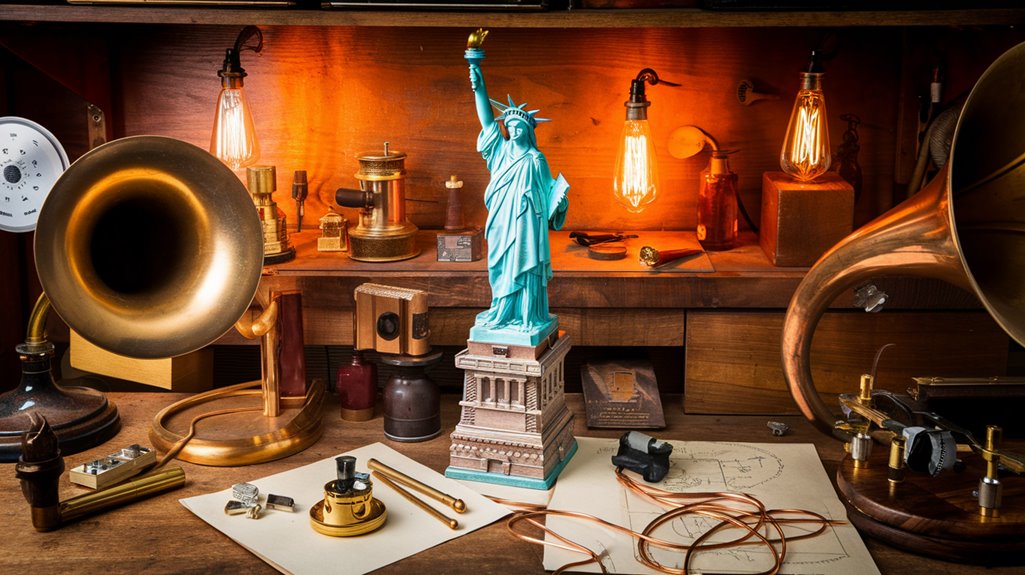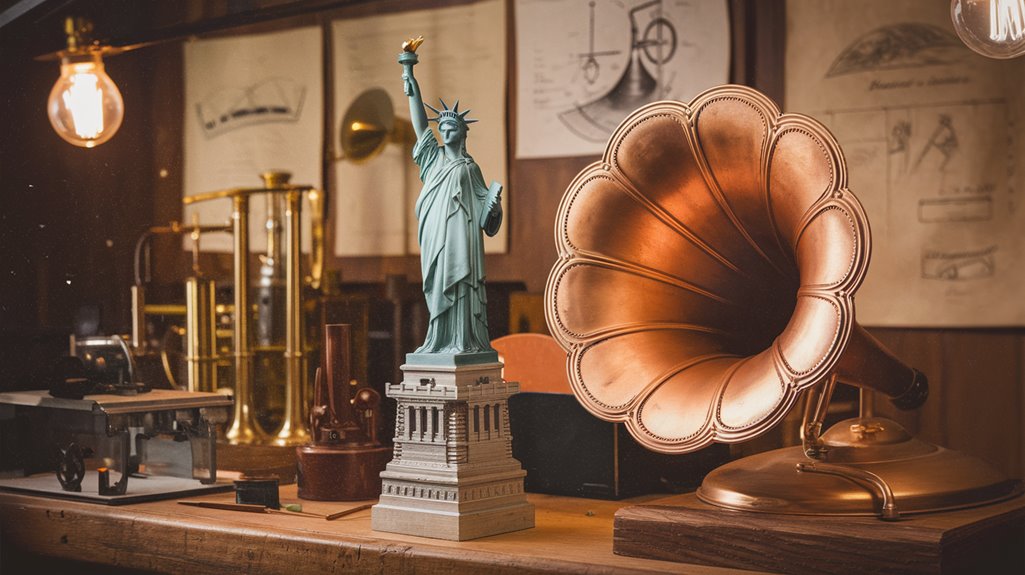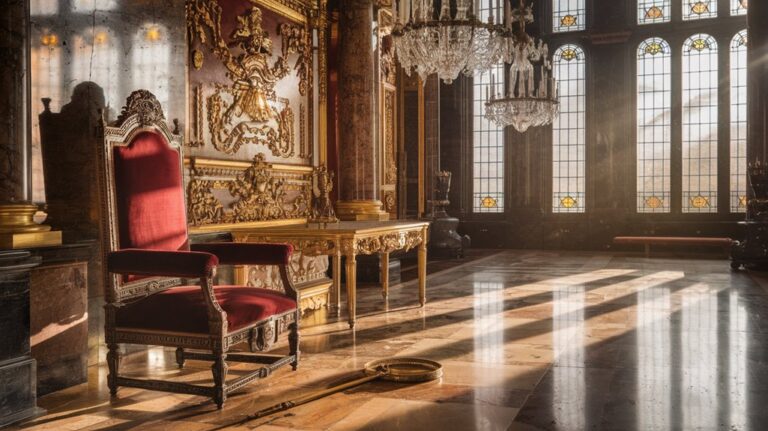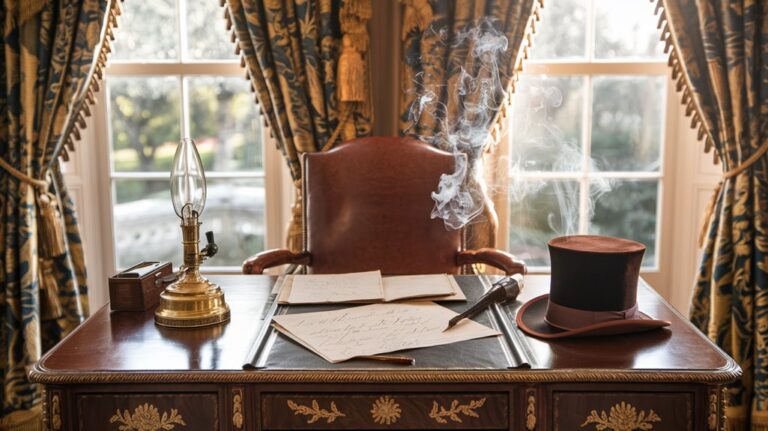Edison Proposed Making Lady Liberty Speak
Imagine standing at Battery Park in 1878 and hearing Lady Liberty's voice boom across New York Harbor, welcoming ships to America's shores. You might think this sounds like science fiction, but Thomas Edison actually proposed this audacious plan to make the Statue of Liberty speak using his phonograph technology. His vision included a massive disc system that would have transformed the silent sentinel into a talking beacon of freedom. The story behind this unrealized innovation reveals both the genius and limitations of America's greatest inventor.
The Ambitious Vision of a Talking Monument
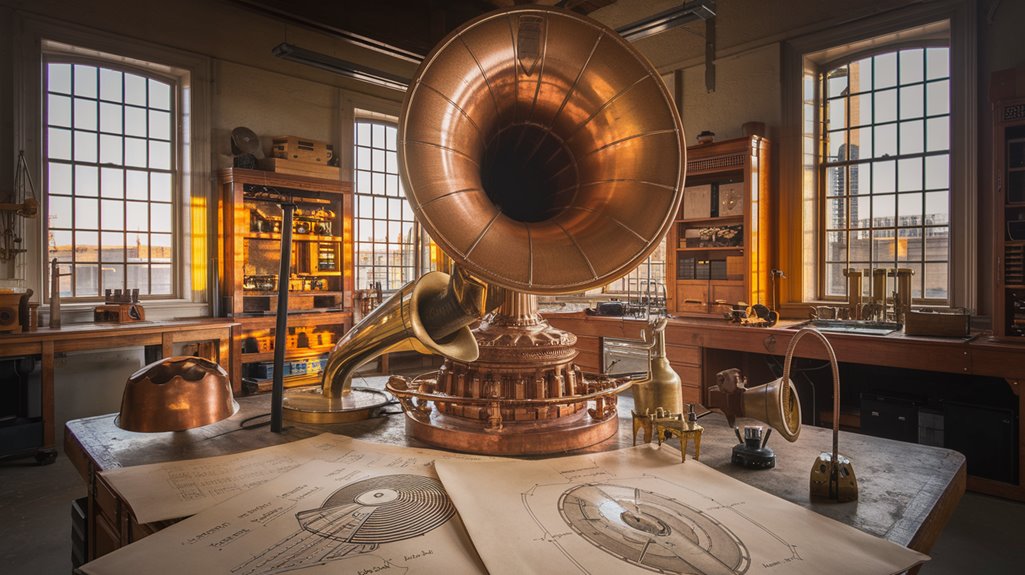
While the Statue of Liberty stands today as a silent guardian of New York Harbor, Thomas Edison once dreamed of giving Lady Liberty a voice. His innovative vision involved installing talking technology within the monument – a massive phonograph system that would broadcast messages across the waters and into northern Manhattan.
You might wonder why Edison pursued this ambitious project. Beyond its cultural significance as a symbol of freedom and friendship between France and America, the statue was meant to serve as a lighthouse. When the torch proved too dim for navigation, Edison saw an opportunity to enhance the monument's utility. Originally copper colored brown, the statue's exterior would later transform through decades of environmental exposure.
He believed his amplified phonograph system could guide ships through fog and simultaneously project Liberty's message of democracy. Much like how direct communication with readers was vital to successful blogging years later, Edison's vision centered on creating a powerful connection between the monument and its audience. Though the project never materialized, it exemplified Edison's boundless imagination and technological ambition.
Inside Edison's Monster Disc Design
At the heart of Edison's ambitious plan lay an engineering marvel known as the "monster disc" – a supersized version of his phonograph technology.
You would've heard Lady Liberty's voice booming across New York Harbor through this primitive stereo system, reaching as far as northern Manhattan.
Edison's innovation centered on creating a disc capable of projecting clear, undistorted sound over vast distances.
The system's design required significant sound amplification to achieve the desired range, making it seem as if the statue itself were speaking.
You'd find the technology cleverly integrated within the monument for a lifelike effect, potentially serving a practical purpose by alerting ships during heavy fog.
While never realized, this 1878 proposal demonstrated Edison's creative vision for combining technology with iconic architecture.
Much like how the study showed that expert opinions can amplify reach, Edison's plan relied on leading scientists of his time to validate the concept.
From Lighthouse to Speaking Beacon
Before becoming a beloved national monument, Lady Liberty served as a navigational beacon for ships entering New York Harbor. You might be surprised to learn that her torch contained nine electric arc lamps powered by an underwater cable from the mainland, visible up to twenty-four miles at sea.
Yet this chapter in innovation history proved challenging. Clear structured communication was essential for ships to navigate safely using the beacon light. The light was too dim and required constant maintenance, while the statue's location wasn't ideal for a lighthouse. Albert E. Littlefield was appointed as the first and only keeper of the lighthouse, earning $1,000 annually.
After the U.S. Lighthouse Board's oversight ended in 1901, the War Department took control. The statue's symbolism evolved beyond maritime purposes, especially as immigration through Ellis Island increased.
Though her role as a lighthouse faded, Lady Liberty gained even greater significance as America's iconic beacon of hope, featuring prominently in World War I recruitment posters and Liberty bond campaigns.
Why the Grand Plan Never Materialized
Though Edison dreamed of making Lady Liberty speak through an ambitious phonograph system, several insurmountable obstacles doomed his grand vision from the start.
The technical limitations of 1878's amplification technology simply couldn't project sound across New York Harbor effectively, and the phonograph equipment required would have been impossibly large and complex to install within the statue.
The project needed a thorough quality assessment to evaluate its technical feasibility before moving forward.
You'll find that funding issues also played a vital role in the project's demise.
Key stakeholders didn't take Edison's proposal seriously, viewing it as unnecessarily extravagant. The high costs of implementation and maintenance, combined with a lack of public interest, meant the project never received the financial backing it needed.
Edison enthusiastically promoted the concept to newspapers, hoping to generate support for his innovative idea.
Additionally, the statue's primary purpose as a symbol of freedom took precedence over its potential use as a navigational aid.
The Lasting Legacy of an Unbuilt Innovation
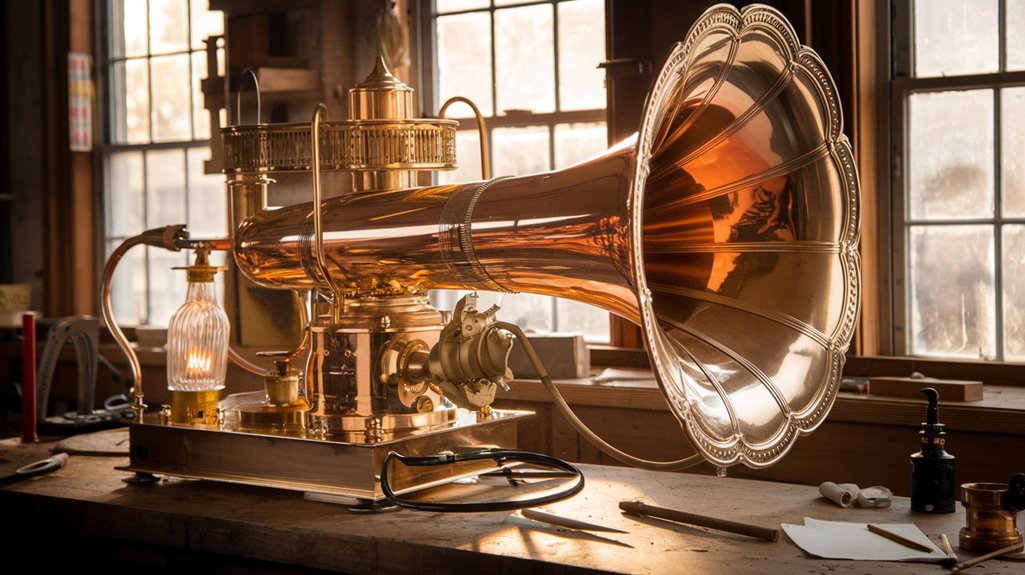
Innovation often leaves its mark even when projects remain unrealized, and Edison's audacious plan for a speaking Statue of Liberty stands as a prime example.
Though the concept never materialized, its cultural implications continue to resonate today, inspiring modern innovators to push boundaries in public art and monument design.
You'll find Edison's vision reflected in today's interactive installations and multimedia displays at museums and public spaces worldwide. Auguste Bartholdi designed the iconic monument after extensively exploring America's ideals and landscapes.
The technological evolution from his basic phonograph concept to today's digital audio systems shows how ahead of his time he truly was.
While Lady Liberty never spoke as Edison imagined, his creative spark helped establish a legacy of combining art with technology.
The proposal demonstrated that even seemingly impossible ideas can pave the way for future innovations and shape our approach to public monuments. These revolutionary concepts often spark vigorous intellectual debate among researchers and critics alike.

